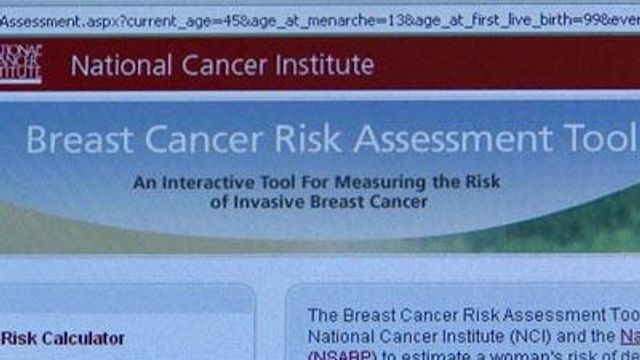Health Team
Online tool calculates breast cancer risk
With early diagnosis a key to overcoming breast cancer it is important for a woman to know early on her risk for the disease, which is why the Gail Model was developed.
Posted — UpdatedWhile the risk of invasive breast cancer is low for most women, some are at a high risk for the disease and don’t know it.
With early diagnosis being a key to overcoming breast cancer, it is important for a woman to know early on what her risk for the disease is, which is why the Gail Model was developed.
The Gail Model Risk Calculator is an online tool that asks nine questions to help determine a woman’s risk of breast cancer. They include the age and race of the patient; when the patient started menstruation; whether the patient has a first-degree relative with breast cancer; and if the patient has undergone previous breast biopsies.
Breast surgeon Dr. Gayle DiLalla said annual mammograms for women age 40 and older are still the first line of defense against breast cancer.
DiLalla looks at the disease like a pie chart.
“The biggest piece of that pie is sporadic breast cancer,” DiLalla said. Sporadic breast cancer patients have no family history of breast cancer or other increased risk factors.
Familial is the next-largest group. It includes women who have a family history of the disease even though they don’t have a genetic mutation disposing them to get it, DiLalla said.
About 7 percent of women develop breast cancer in their lifetime. If a family history with a genetic mutation in the BRCA gene exists, the risk for breast cancer goes up to 87 percent, and the risk for ovarian cancer is about 44 percent.
Genetic testing can cost thousands of dollars, though insurance will help in many cases. Many women who choose to undergo the test have been diagnosed with breast cancer before the age of 50, have multiple family members who’ve had breast cancer or have family members who have been diagnosed with the gene mutation for breast cancer.
The Gail Model calculates the five-year risk of breast cancer and the lifetime risk.
“That will create a subgroup of patients that can then be offered additional screening and even medications prophylactically to try and reduce their chances of developing invasive breast cancer,” DiLalla said.
On Friday, WRAL’s Health Team will follow a woman who found out she has the BRCA gene mutation, but only after cancer developed.
• Credits
Copyright 2024 by Capitol Broadcasting Company. All rights reserved. This material may not be published, broadcast, rewritten or redistributed.





